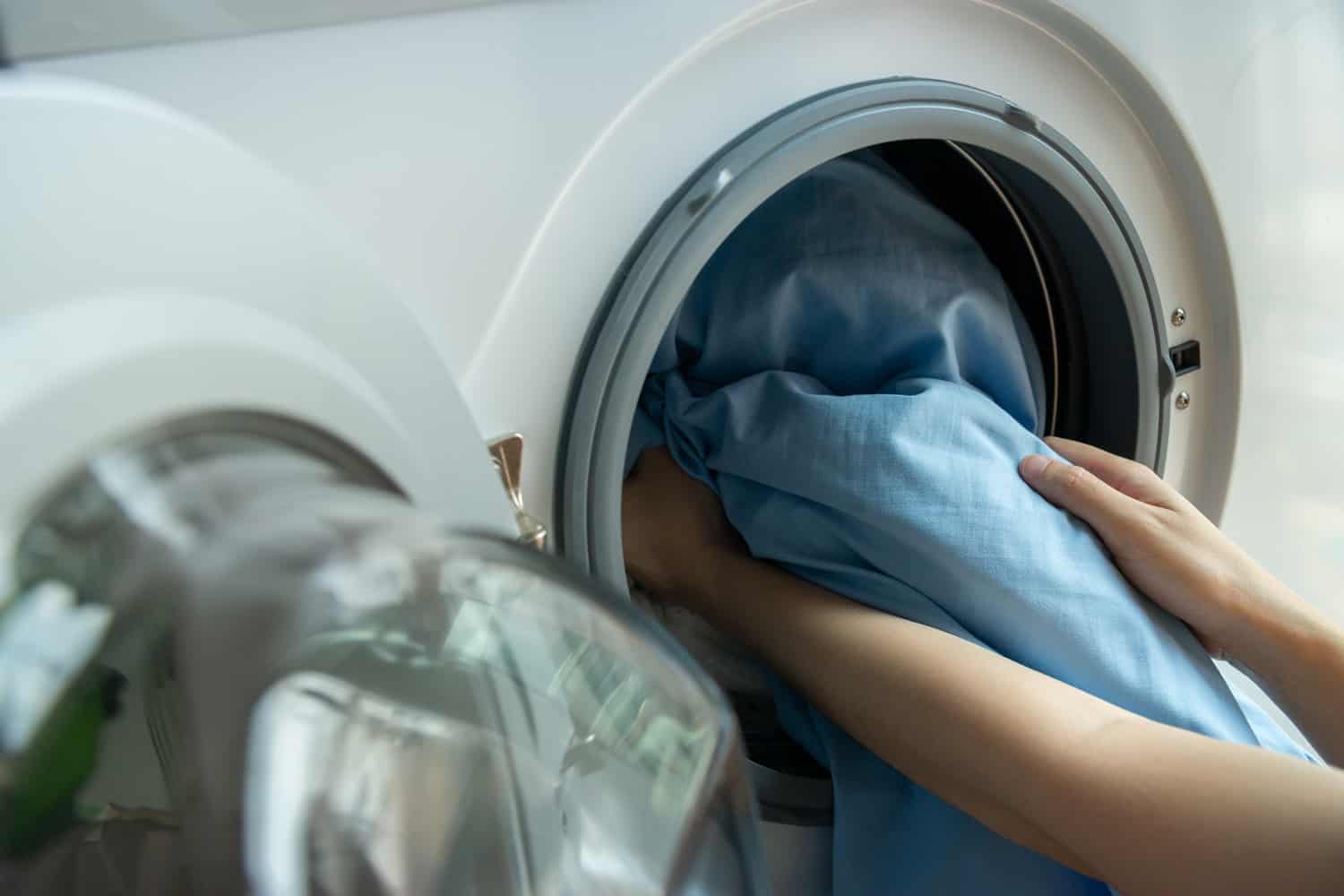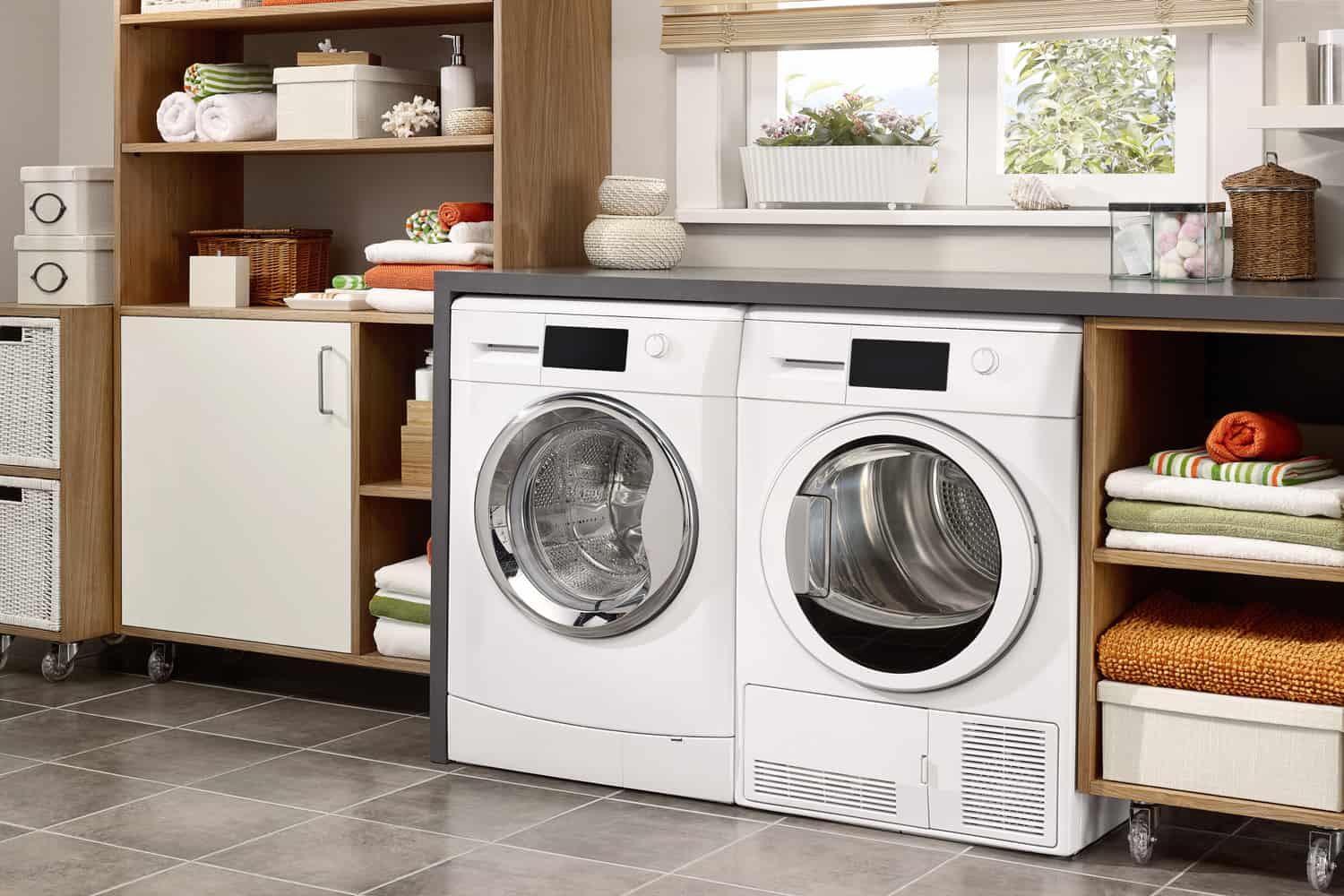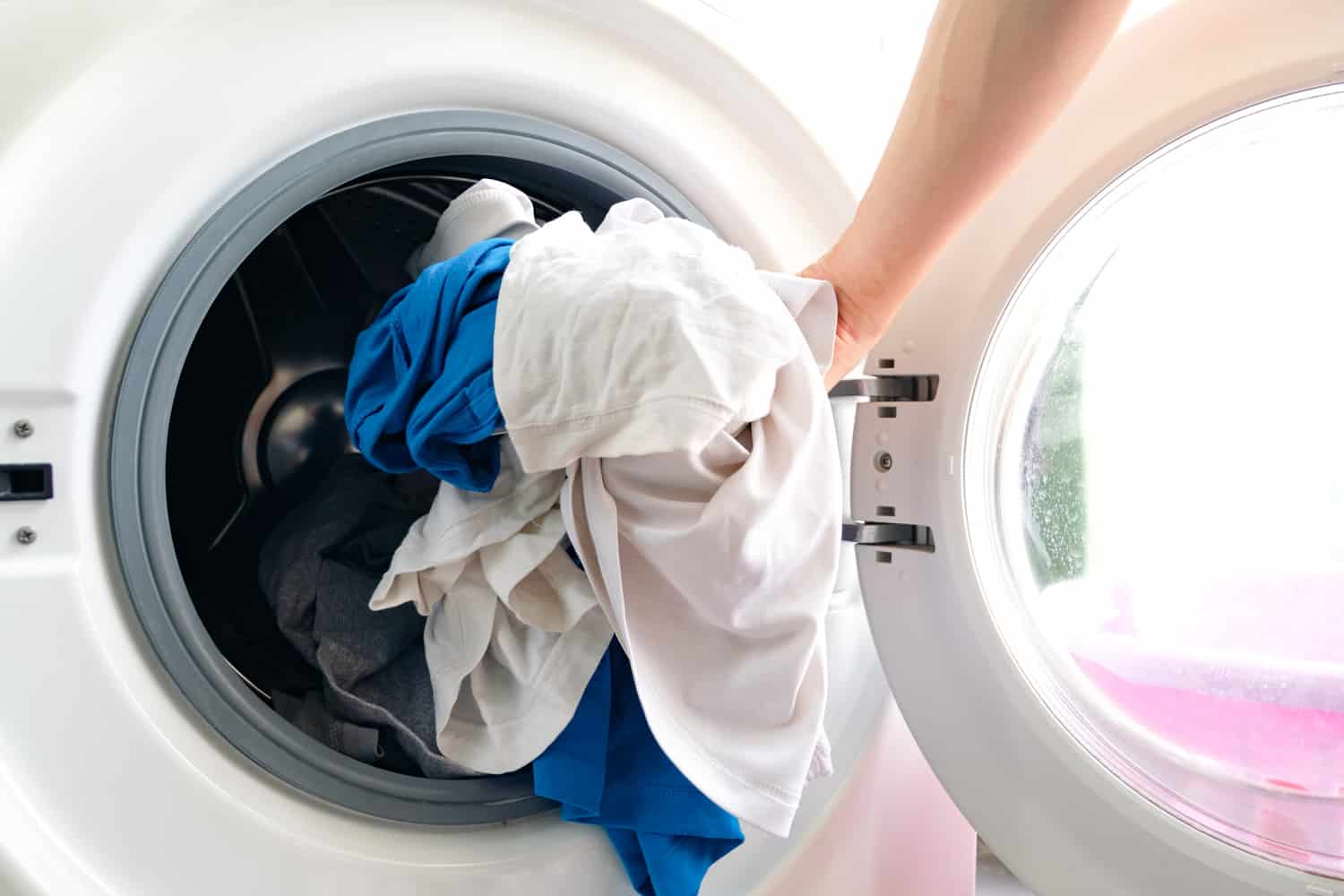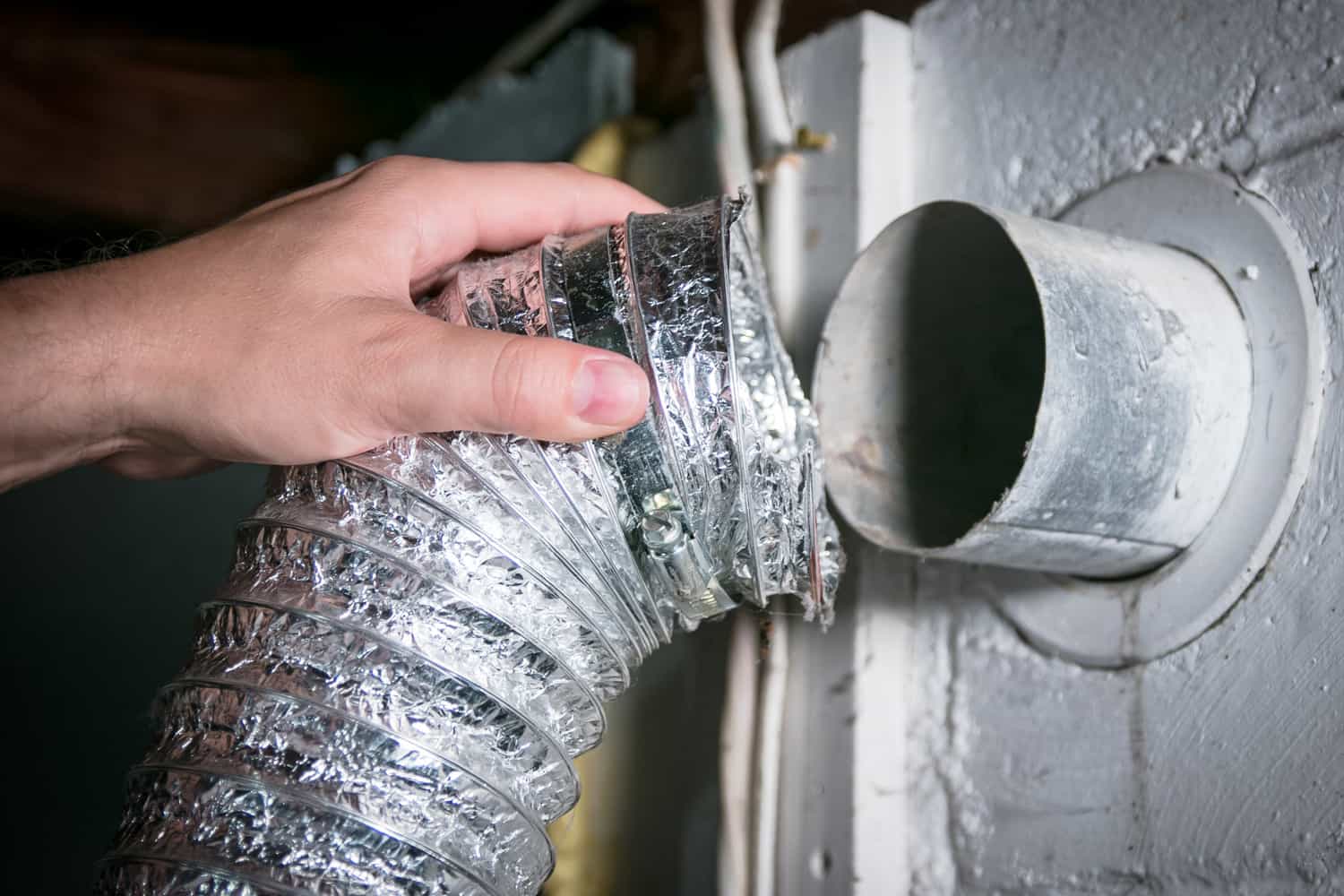Dryers work by tumbling damp clothes in a spinning drum where heated air removes the moisture by evaporation. The moisture is pushed out through a vent, transporting it outside your home with the help of a fan. But can you use a dryer without a vent? Here's what the experts we asked have to say.
You can use a dryer without a vent, but it is not recommended. Vents help to circulate air, enhance drying and improve the dryer's performance. Although ventless dryers are designed to condense moisture back to liquid, they can be prone to overheating and inefficient energy consumption.
Using a dryer without a vent can be dangerous, but certain precautions have to be put in place if you have to. Keep reading to learn the step-by-step procedure on how to do this safely.

How to Run a Dryer Without Venting [Step-by-Step]

If you are using a gas dryer, ensure that you have the right amount of ventilation, failure to do so can result in the build-up of carbon monoxide, which is life-threatening. Electric dryers do not necessarily need ventilation but can overheat or incur more electrical bills.
However, if you must use a dryer without vents, you should consider the following steps.
- Step 1: Open up all the windows near the dryer so that the air coming in can cool the dryer while it is running.
- Step 2: Install lint filters to trap lint from fabrics during drying.
- Step 3: Run an aluminum hose to lead moisture and fumes outside. The hose would usually have two ends, one end connected to the dryer and the other to any outdoor opening.
Uses of Ventilation in Dryer
The efficiency of a dryer is greatly improved by ventilation. It is essential that the location of your dryer is accessible to enough ventilation or has one installed.
Vents are used to:
Aid Drying
Because most vents come with fans installed in them, during the drying process, moisture is extracted out of the dryer with the help of the fan, which through the vents escapes outside. This continuous cycle aids the drying process.
Prevent Overheating
The motors in a dryer are running every time the dryer is in use. The longer it is in use, the hotter it gets. Without a vent, you stand the chance of letting your dryer overheat, which can damage the dryer’s motor and cause the appliance to fail.
Prevent Clogging
During drying, warm air contains lint that lingers in the exhaust unit while the dryer is running. If the exhaust is not cleaned regularly, it hinders airflow, which can cause leakage. Lingered lint can accumulate over time and affect the performance of your dryer.
Result of Running a Dryer Without Ventilation

Assuming you removed the vent installed in your dryer and used it normally. Some of the dangers you are likely to face are:
Fire Outbreak
The heat and lint buildup associated with dryers increase the likelihood of a fire outbreak when using a dryer without a vent. The temperature inside rises, which can ignite the lint during drying. If the fire is not detected and contained quickly, it can spread to other areas of your home.
Humidity
One of the functions of a vent is its ability to expel moisture outside your home. Dryers without vents will retain warm air and moisture in your home.
Over time, your home becomes hot and stuffy, creating an ideal breeding environment for mold. The warmth will eventually deteriorate your walls and floor, causing an unhealthy living environment.
Carbon Monoxide Poison
When using gas dryers, the use of dryer vents is unquestionable. Carbon monoxide, a byproduct of come gas-powered appliances, is lethal. As a result, the vent must lead outside the house, or else the gas will fill a room, and this can pose a danger to everyone inside.
Safety Tips For Running a Dryer Without Vent

Here are some safety tips you should keep in mind while running a dryer without a vent.
Aerate The Room
Install a fan or open up the windows where the dryer is kept; this will keep it cool and expel or reduce the effect of any harmful fumes.
It is recommended that you keep your windows open while your dryer is in use. Consider leaving them open for 15 to 20 minutes, especially in the morning and late at night because the weather is cooler.
Install a Lint Trap
Lint can accumulate over time, causing problems for dryers without vents. Installing a lint trap collects the lint emitted during drying. It is also essential to clean the trap regularly to avoid fire hazards and allergies and improve its effectiveness.
How to Clean a Lint Trap
- Consult the manual of your specific dryer brand to locate the position of your filter.
- Remove the filter from its position and use your fingers to take off the lint on the screen.
- Pour a small amount of water into the filter. If the water does not pass through the filter, it requires more cleaning with a brush and soap. Rinse thoroughly and allow to dry.
- The filter slot can be cleaned by inserting the core of a paper towel into the nozzle of a vacuum. This will fit into the gaps of the filter slot and can be used to remove the trapped lint.
Install a Vent Hose
Temporarily or permanently, connect a hose that expels heat, fumes, or lint outside. As a result, the dryer maintains its efficiency, and the air inside your house remains fresh and conducive to breathing. To avoid lint corrugating in the hose, it is vital to have it cleaned regularly and replace damaged parts.
How to Clean a Vent Hose
- Move the dryer away from the wall to get behind it. Remove the vent hose by unscrewing the clamp that connects the hose to the dryer's outlet.
- Use a vacuum cleaner to remove any lint trapped at the dryer's outlet.
- Use a vacuum to remove lint from the hose. If there is still lint after vacuuming, you can try:
- Using a long brush designed specifically for cleaning vent hose.
- Use a leaf blower to remove the lint.
- Flushing the hose with a good amount of water.
- The vent outlet by the house should be cleaned as well, with a vacuum or brush.
Is It Okay to Vent a Dryer Indoors?
There are numerous reasons you might choose to vent your dryer indoors; it could be due to how the house was built or old practices. For your own safety, you should avoid venting your dryer indoors. In some countries, venting indoors is illegal because of some reasons like:
Adverse Health Implication
It is never a good idea to use a gas dryer indoors because of its carbon monoxide emission. This gas is colorless and has no odor. It causes brain damage and kills in a matter of minutes.
Electric dryers do not emit carbon monoxide, but they are not without their cons. Venting indoors promotes the growth of mold and can disperse lint into the air, which one can breathe in. Exposure to vent fumes can cause fatigue, headaches, and in some cases, vomiting.
Home and Structural Damage
The amount of water extracted by a dryer ranges between 1 and 2 gallons. The water evaporates and exits through the vent hose. If the vent hose is inside, the humidity level in your home increases, causing surfaces and structures to deteriorate over time.
This moisture level in your home encourages mold to grow, and most times, in places you cannot see it. It also makes it more difficult for the dryer to dry the clothes quickly. If you use an electric dryer, your bill may rise because you will need to run your dryer for a longer time.
No matter the type of dryer, always consider venting outside your home to prevent the risk of any health problems or structural damage to your home.
Should a Dryer be Vented Up or Down?
The preferred method of venting a dryer is down. Placing the vent downward prevents clogging by lint. Suppose the vent is up; there is more pressure to push the lint out the vent.
Also, when the vent is down, it prevents condensation of the moisture displaced during drying, which can back drip into the building.
Should I Use PVC Pipe For Dryer Vent?

No, you should not use PVC pipe for the dryer vent. PVC pipes are susceptible to heat, which is one reason they are not used in vents. Also, because of the composition of PVC pipes, they attract lint that can accumulate inside.
In Summary
Using a dryer requires the right amount of ventilation to avoid any setbacks. If you must use a dryer without a vent, ensure you take the necessary precautions to reduce your risks. If possible, run a temporary backup venting system.
For more related articles about dryers, check out these engaging posts:
